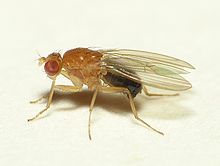
Drosophila is a genus of flies, belonging to the family Drosophilidae, whose members are often called "small fruit flies" or pomace flies, vinegar flies, or wine flies, a reference to the characteristic of many species to linger around overripe or rotting fruit. They should not be confused with the Tephritidae, a related family, which are also called fruit flies ; tephritids feed primarily on unripe or ripe fruit, with many species being regarded as destructive agricultural pests, especially the Mediterranean fruit fly.

The Drosophilidae are a diverse, cosmopolitan family of flies, which includes species called fruit flies, although they are more accurately referred to as vinegar or pomace flies. Another distantly related family of flies, Tephritidae, are true fruit flies because they are frugivorous, and include apple maggot flies and many pests. The best known species of the Drosophilidae is Drosophila melanogaster, within the genus Drosophila, also called the "fruit fly." Drosophila melanogaster is used extensively for studies concerning genetics, development, physiology, ecology and behaviour. Many fundamental biological mechanisms were discovered first in D. melanogaster. The fruit fly is mostly composed of post-mitotic cells, has a very short lifespan, and shows gradual aging. As in other species, temperature influences the life history of the animal. Several genes have been identified that can be manipulated to extend the lifespan of these insects. Additionally, Drosophila subobscura, also within the genus Drosophila, has been reputed as a model organism for evolutionary-biological studies, along with D. sechellia for the evolution of host specialization on the toxic noni fruit and Scaptomyza flava for the evolution of herbivory and specialist on toxic mustard leaves.

The Drosophilinae are the largest subfamily in the Drosophilidae. The other subfamily is the Steganinae.
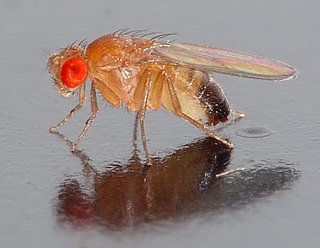
The paraphyletic subgenus Sophophora of the genus Drosophila was first described by Alfred Sturtevant in 1939. It contains the best-known drosophilid species, Drosophila melanogaster. Sophophora translates as carrier (phora) of wisdom (sophos). The subgenus is paraphyletic because the genus Lordiphosa and the species Hirtodrosophila duncani are also placed within this subgenus.
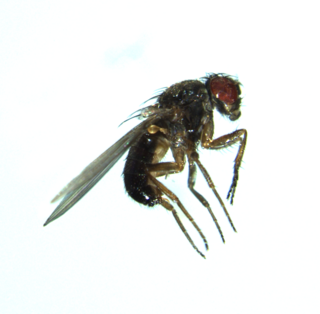
The Drosophila obscura species group belongs to the subgenus Sophophora and contains 6 subgroups: affinis, microlabis, obscura, pseudoobscura, subobscura, and sinobscura.

Hirtodrosophila is a genus of fruit flies from the family Drosophilidae. Originally Hirtodrosophila was a subgenus of the genus Drosophila. It was raised to the status of genus by Grimaldi in 1990.
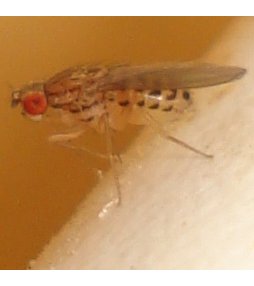
The subgenus Dorsilopha belongs to genus Drosophila and consists of four species. The phylogenetic position of this group has been unclear for a long time, but recent studies have shown that the subgenus is positioned ancestral to the subgenus Drosophila.

The immigrans-tripunctata radiation is a speciose lineage of Drosophila flies, including over 300 species. The immigrans-tripunctata radiation is a sister lineage to most other members of the subgenus Drosophila. A number of species have had their genomes or transcriptomes sequenced for evolutionary studies using Drosophila.

The genus Zaprionus belongs to the family fruit fly Drosophilidae and is positioned within the paraphyletic genus Drosophila. All species are easily recognized by the white longitudinal stripes across the head and thorax. The genus is subdivided in two subgenera, based on the presence of an even or odd number of white stripes. The species of the genus can be found in Africa and Southern Asia. One species, Zaprionus indianus, has invaded the New World.

Chymomyza is a genus of vinegar flies.
Microdrosophila is a genus of vinegar flies, insects in the family Drosophilidae. There are at least 70 described species in Microdrosophila.
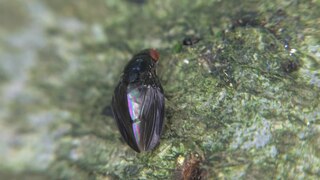
Stegana is a genus of vinegar flies, insects in the family Drosophilidae. There are at least 140 described species in Stegana. Seven species complexes have been established based on morphological data: S. biprotrusa, S. castanea, S. coleoptrata, S. nigrolimbata, S. ornatipes, S. shirozui and S. undulata.
Drosophila albomicans is a species of vinegar fly in the family Drosophilidae. Drosophila albomicans is a member of the Immigrans-tripunctata radiation of the subgenus Drosophila. The D. albomicans genome was first sequenced in 2012 to study the evolution of novel sex chromosomes, a characteristic this species is best known for. One commonly accepted definition of the biological species concept is that individuals or populations are members of different species if they are incapable of successful interbreeding. While D. albomicans and Drosophila nasuta are commonly referred to as distinct species, there appears to be little to no sexual isolation between these two Drosophila species. Instead, behavioural differences appear to reproductively isolate these two species.
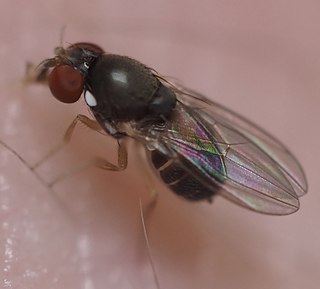
Amiota is a genus of flies belonging to the family Drosophilidae. The genus has a cosmopolitan distribution.
Drosophila senilis is a species of fly; it is the type species of the subgenus Dudaica.
